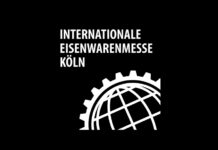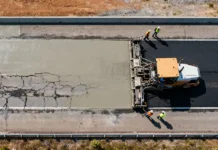Infrastructure degradation presents one of the most pressing challenges facing transportation agencies and facility managers worldwide. Aging roadways, deteriorating airport pavements, and worn industrial floors require rehabilitation solutions that minimize disruption while delivering long-term performance. Ultra-thin concrete overlays have emerged as a transformative technology addressing these competing demands, enabling rapid resurfacing that restores structural capacity and extends service life without the extensive timelines and costs associated with complete reconstruction.
Understanding the Technology and Its Applications
Ultra-thin concrete overlays, typically ranging from 50 to 100 millimeters in thickness, represent sophisticated engineered systems rather than simple concrete toppings. These specialized materials achieve remarkable strength and bonding characteristics through carefully optimized mix designs incorporating high-performance additives and fiber reinforcement. The formulations depart significantly from conventional concrete, employing enhanced cementitious binders, carefully graded fine aggregates, superplasticizers for workability, and polymer or fiber additives that improve flexural strength and crack resistance.
The technology finds application across diverse infrastructure types, each presenting unique technical requirements. In highway rehabilitation, ultra-thin overlays restore ride quality and structural capacity to deteriorated asphalt pavements experiencing rutting, cracking, or surface degradation. Airport applications address the particularly demanding loading conditions imposed by heavy aircraft, where pavement failures can ground operations and generate massive economic consequences. Industrial facilities leverage overlays to rejuvenate floors subjected to heavy equipment traffic, chemical exposure, and intense operational demands. Urban streets benefit from rapid installation that minimizes disruption to traffic flow and business access in densely developed areas.
The distinction between ultra-thin white topping at 50-100mm thickness and thin white topping at 100mm and above reflects both engineering considerations and practical applications. Ultra-thin systems rely heavily on composite action with underlying pavements, deriving support from the existing structure while providing a new wearing surface and restoring structural contribution. Thin overlays provide greater independent structural capacity but require longer installation times and generate more material consumption. The selection between these approaches depends on existing pavement condition, anticipated loading, project timeline constraints, and budget parameters.
Technical Advantages Driving Industry Adoption
The compelling performance characteristics of ultra-thin concrete overlays stem from multiple technical factors working in concert. High-strength concrete formulations achieving 40-60 MPa compressive strength provide robust load-carrying capacity despite minimal thickness. Fiber reinforcement, whether synthetic or steel, distributes stresses throughout the overlay, controlling crack propagation and enhancing impact resistance. Advanced bonding agents create intimate mechanical and chemical connections between the new overlay and existing pavement substrate, enabling the two materials to function as a composite system.
Rapid strength gain represents a critical advantage for infrastructure applications where minimizing downtime directly translates to economic and operational value. Specialized cement formulations incorporating rapid-hardening hydraulic cements can achieve service-ready strength within hours rather than days. Projects utilizing these systems have opened repaired roadways to traffic within 24 hours of placement, compared to week-long closures required for conventional approaches. This acceleration proves particularly valuable for airport taxiways, highway intersections, and other high-consequence facilities where extended closures create unacceptable disruption.
The bonding interface between overlay and substrate represents perhaps the most critical technical aspect determining long-term performance. Proper surface preparation proves essential, typically involving diamond grinding or milling to remove weak surface material and create a textured profile promoting mechanical interlock. Contamination removal through pressure washing or abrasive blasting ensures that bonding agents make direct contact with sound substrate material. When properly executed, these preparation steps produce bond strengths exceeding 1.5 MPa, sufficient to prevent delamination under traffic loading and environmental stresses.
Joint spacing strategies differentiate thin overlays from traditional concrete pavements. Shorter joint intervals, typically 12 to 18 times the overlay thickness, reduce curling stresses and minimize the impact of volumetric changes due to temperature and moisture fluctuations. This tight joint spacing, combined with strong substrate bonding, allows ultra-thin overlays to accommodate movement without developing significant cracking or distress. Saw-cut timing becomes crucial, as premature cutting can cause raveling along joints while delayed cutting allows stress accumulation that produces random cracking before planned joint locations form stress relief planes.
Implementation Strategies and Construction Considerations
Successful ultra-thin overlay projects demand meticulous attention throughout the construction sequence, beginning with comprehensive condition assessment of existing pavements. Engineers evaluate structural capacity through deflection testing, identify areas requiring pre-overlay repair, and determine whether the substrate can support composite action with the planned overlay. Severely deteriorated sections may require removal and replacement or stabilization before overlay placement proceeds, as the thin overlay cannot bridge significant voids or unstable areas beneath.
Surface preparation methods vary based on substrate type and condition, but all aim to create clean, sound, textured surfaces promoting strong bonding. Asphalt pavements typically receive milling to remove rutted or damaged material while creating surface roughness. Concrete substrates undergo diamond grinding or shotblasting to expose sound material and develop texture. The specified surface profile depth, typically 1-2mm, balances bonding requirements against smoothness needs for final riding quality.
Material batching and delivery require careful quality control to maintain the specialized mix designs underlying overlay performance. Ready-mix concrete plants must achieve consistent proportioning of the multiple admixtures and supplementary materials comprising high-performance overlay mixes. Transportation times between plant and project site receive scrutiny to ensure materials arrive within specified workability windows. Some projects employ onsite mixing equipment to maximize control over material properties and timing.
Placement techniques adapted specifically for thin overlays differ from conventional concrete paving operations. Specialized screeds capable of achieving flatness and smoothness specifications across minimal thickness prove essential. Fiber-reinforced mixes require careful consolidation to ensure uniform fiber distribution without causing fiber balling or segregation. Surface finishing must balance the competing objectives of adequate texture for traction against smoothness for ride quality and wear resistance. Curing assumes heightened importance for thin sections vulnerable to rapid moisture loss, typically employing membrane-forming compounds immediately after finishing.
Economic and Operational Benefits Across Applications
The value proposition for ultra-thin concrete overlays extends across multiple dimensions beyond simple material and labor costs. Life-cycle economic analysis reveals substantial advantages when total costs encompassing initial construction, maintenance requirements, and service disruption impacts receive consideration. Ultra-thin overlays can reduce project costs by 30-40 percent compared to full-depth pavement reconstruction while delivering comparable or superior long-term performance in appropriate applications.
Construction speed advantages translate directly into reduced user delay costs, a consideration of paramount importance for major transportation facilities. A highway interchange rehabilitation requiring weeks of lane closures under traditional reconstruction might be completed in days using overlay technology, dramatically reducing traffic disruption and associated economic losses. Airports achieve similar benefits, maintaining operational capacity while progressively resurfacing pavement sections during overnight or low-traffic periods.
Maintenance cost reductions over the overlay service life compound initial savings. High-performance concrete overlays demonstrate excellent resistance to common distress modes including cracking, rutting, and surface deterioration. The hard, dense concrete surface resists wear from traffic loading and environmental exposure more effectively than aged asphalt pavements. Material savings from reduced thickness and selective repair of only distressed areas rather than complete pavement replacement contribute to environmental sustainability while improving project economics.
Real-world performance data increasingly validates the durability expectations for properly designed and constructed ultra-thin overlays. Airport projects utilizing these systems have achieved service lives exceeding 15-20 years under demanding heavy aircraft loading, comparable to traditional full-depth concrete pavements at substantially lower initial cost and construction disruption. Highway applications demonstrate similar longevity, with many installations surpassing their design lives while maintaining acceptable riding quality and structural integrity.
Future Directions and Technology Evolution
Research and development efforts continue advancing ultra-high performance concrete formulations that may enable even thinner overlays with enhanced capabilities. These materials, incorporating steel or synthetic fibers at higher volume fractions and employing ultra-fine particle size distributions, achieve compressive strengths exceeding 150 MPa and exceptional durability characteristics. Early applications in bridge deck overlays demonstrate the potential for extending these systems to pavement applications where extreme loading conditions or aggressive environments demand maximum performance.
Sustainability considerations increasingly influence overlay technology development. Ultra-thin systems inherently consume less material than full-depth reconstruction alternatives, reducing embodied carbon and material extraction impacts. Ongoing research explores incorporating recycled materials, supplementary cementitious materials reducing portland cement content, and locally-sourced aggregates minimizing transportation distances. The emerging focus on whole-life carbon accounting positions overlay technologies favorably compared to alternatives requiring more frequent replacement cycles.
Digital design and quality assurance tools enhance implementation reliability and performance predictability. Building information modeling enables visualization of overlay geometry and substrate conditions, supporting optimized design solutions. Automated testing equipment provides real-time verification of concrete properties during production and placement. Sensor technologies embedded within overlays monitor structural performance throughout the service life, validating design assumptions and enabling condition-based maintenance strategies.
The integration of ultra-thin concrete overlays into comprehensive infrastructure asset management programs represents a strategic evolution in how agencies approach pavement preservation. Rather than allowing pavements to deteriorate until major reconstruction becomes necessary, proactive overlay application maintains serviceability at lower total cost. This shift from reactive to preventive management philosophies, enabled by rapid and cost-effective rehabilitation technologies, promises to maximize infrastructure value while maintaining the reliable transportation networks essential to modern economies.
Ultra-thin concrete overlays exemplify how targeted innovation in materials and construction methods can address critical infrastructure challenges. The technology balances competing demands for rapid installation, long-term durability, and cost-effectiveness, making it an increasingly essential tool for maintaining and upgrading the built environment. As experience accumulates and capabilities advance, these specialized overlay systems will play expanding roles in preserving infrastructure assets and enabling the efficient mobility modern society requires.
































